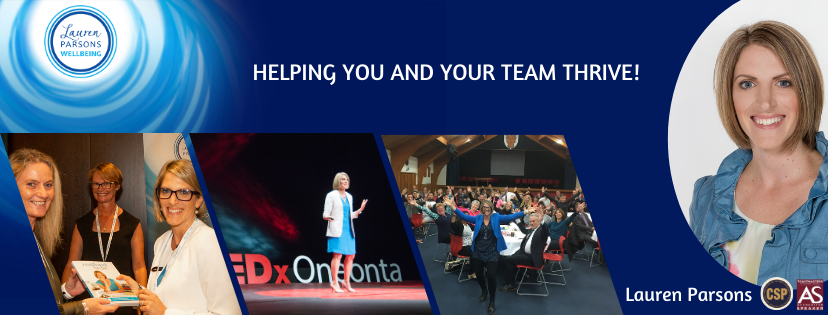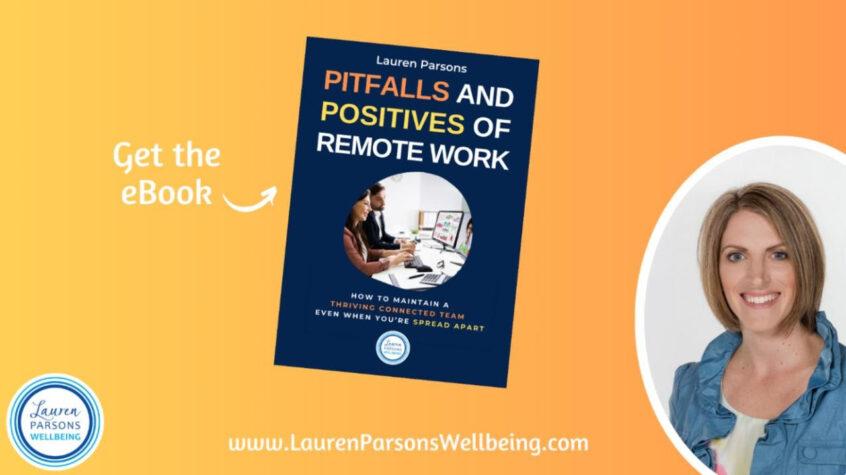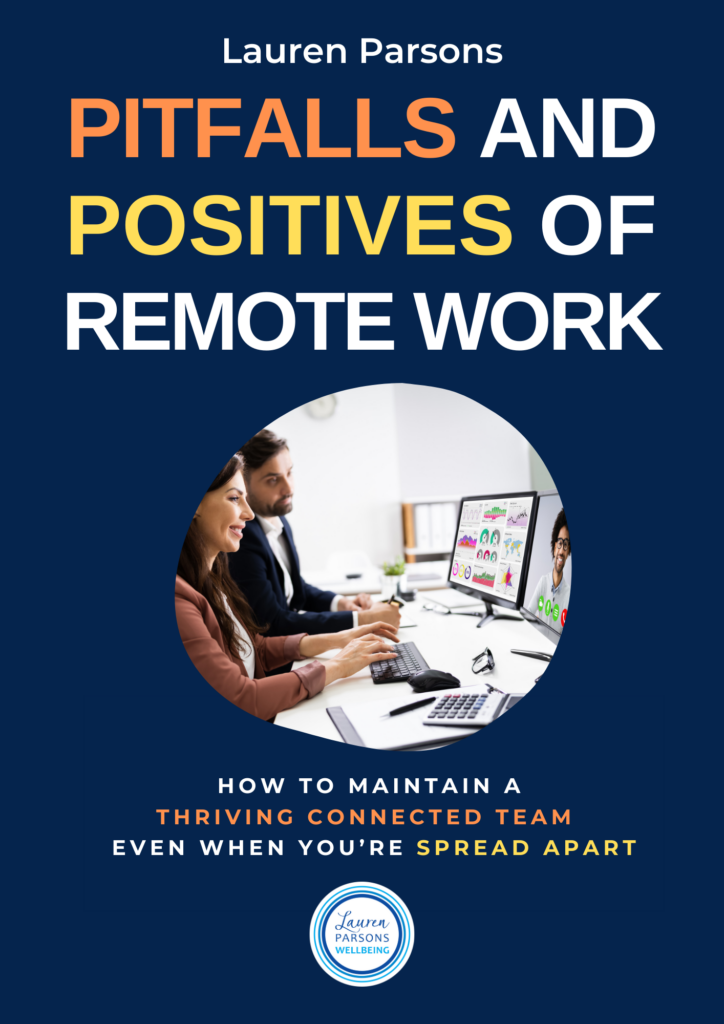This is an excerpt from Lauren Parsons’ book “Pitfalls and Positives of Remote Work: How to maintain a thriving connected team even when you’re spread apart.” You can download a complimentary copy here.
THE MYTHS AND THE TRUE CHALLENGES OF REMOTE WORK
Maintaining a great team dynamic has long been a challenge for leaders. With flexible and remote working becoming the new norm it’s becoming even more challenging.
How are you going to lead, manage, and motivate a team when everyone’s not in the office together?
While remote work was already a norm in some organisations, the global pandemic forced many workplaces to flip to working from home almost overnight. In the aftermath, staff are demanding continued flexibility on where and when they work. Plenty of organisations have adopting hybrid models – with some people in the office and others working from home some or all of the time.
While this creates some giant challenges for leaders, it’s a trend that’s gaining momentum. A 2021 survey of over 10,000 people across six countries showed 76% of employees want flexibility on work location and 93% want flexibility on work hours.
Having a distributed workforce has huge implications for wellbeing. Seeing as this is such a key issue, I’ve written a book to help leaders who are struggling with how to lead remote teams. You can download the full Pitfalls and Positives of Remote Work eBook.
It gives you a concise, practical guide to manage the significant changes flexible work are creating in virtually every workplace and some of the traps to avoid.
You’ll come away understanding:
- The true challenges of remote work.
- The benefits flexible work can bring.
- How to leverage synchronous and asynchronous ways of working.
- The keys to effective remote work.
- How to run great online meetings.
- Ways to reinforce your culture.
PERCEIVED CHALLENGES OF REMOTE WORK (AKA THE MYTHS)
- You can’t build a company culture if you’re not in the office.
- You won’t know if people are doing their work.
- There’s no way to performance-manage your team.
- People will miss out on all the benefits of ‘water cooler conversations’.
- Staff won’t be able to collaborate effectively.
- You’ll lose your team culture.
- Engagement and loyalty will go down.
I call these the myths because while a lot of managers are talking about these topics, none of the statements above are strictly true.
While there are challenges and a different approach is needed, it’s still possible to maintain an engaged company culture, to build engagement and ensure staff are delivering great work.
Here’s how I would reframe some of these perceived problems into the real challenges we face.
THE TRUE CHALLENGES
1. REMOTE WORK ISN’T ALWAYS AN OPTION
First, not everyone in every role can work from home. This has created a divide between those with and without the option of workplace flexibility. Builders, hairdressers, chefs, wait staff, caregivers, police officers, forestry workers and farmers can’t do much or any of their roles from the comfort of home.
Teachers and doctors also came to mind when I made that list, but as we’ve seen, both online school lessons and phone consultations with your GP have now become a norm, although many would agree they don’t deliver quite the same experience. Who knows whether surgeons will still need to perform surgeries in person over the years ahead or whether that too will change?
The bottom line is that while a wide array of jobs can be performed from home (or anywhere), there will always be a large number that cannot. Leaders need to acknowledge the disparity. Providing flexibility in other ways where possible – such as with flexible hours – can help minimise the unfairness.
2. PERFORMANCE CAN BE MORE DIFFICULT TO MEASURE
Traditionally leaders have focused on hours on the job as a measure of dedication and performance. This outdated mindset of ‘swapping time for money’, needs to change. We need to switch the focus from inputs (hours worked) to impact (actual results).
Even at the office, leaders don’t lurk about looking over their people’s shoulders all day. You don’t need to be in the room with someone to know if they’re delivering good work. You just need some new ways to measure that.
Tracking hours worked is easy, which is why we’ve always done it. Tracking outputs may require new systems but can clearly result in better outcomes. With any style of work, it makes sense to focus on quality outputs.
Discuss this with your team and get their ideas on how to create feedback loops to keep you all informed. Set up tools for staff to share what they’re working on and what they’ve completed. Keep it simple. Test and adjust as you go to find what works.
3. TEAM CULTURE AND CONNECTION CAN BE HARDER TO BUILD
Clearly, it’s more challenging to maintain a connected team when you’re spread apart, but it certainly isn’t impossible. I know myself that I have a deep collegial love and strong connection to certain colleagues whom I’ve only ever met remotely, because the rituals in place in our regular meetings lead to moments of empathy, openness and joy.
Humans are wired for connection and it’s true nothing is quite like meeting up in person. However, you can cultivate a strong sense of belonging and team culture remotely. You just need to be intentional and create rituals that facilitate connection-building moments.
4. PRESENTEEISM BIAS MUST BE MANAGED
One of the challenges for some remote workers is the presenteeism bias, which favours those who work on-site. People physically in the meeting room often have more opportunity to be heard.
Data shows that those present at the office are more likely to receive pay rises and promotions. Create systems to ensure remote voices are seen and heard, to highlight their achievements and create more equity.
5. CLEAR PROFESSIONAL BOUNDARIES MUST BE CREATED
Working from home can blur the lines between work and life outside work. Since the creation of smart devices, this has increasingly become a problem with people feeling tethered to their work.
During the pandemic, which forced people to work from home, many people reported feeling like they were ‘always’ working or finding it difficult to ‘switch off’. One study found those who worked remotely 100% of the time had double the risk of burnout.
It’s critical to have clear expectations and boundaries around availability and responsiveness, so staff can get that vital downtime to recharge.
To continue reading, download your own copy of the full eBook “Pitfalls and Positives of Remote Work : How to maintain a thriving connected team even when you’re spread apart.”
KEY TAKEAWAYS
- Remote and hybrid work forces us to shift our focus from inputs (time on the job) to outputs (actual results).
- Team culture and connection can be harder to build. You need intentional rituals to do so.
- There are many benefits to flexible work, such as less pressure, more time for deep work, more inclusion of quieter team members and better collaboration tools.
- You need to communicate clearly, be aware of proximity bias, document things well and make the times when you do come together extra special.
- Online meetings can be highly effective, fun and engaging when they’re run well.
- Focus on building a close-knit team through connection meetings.
About the Author – Lauren Parsons, CSP, AS
Lauren is a keynote speaker, author and consultant who’s passionate about helping busy people discover little-used techniques to boost their energy, vitality and performance. She’s the only speaker in the world to focus on lifting BOTH workplace wellbeing and productivity.
Awarded NZ Keynote Speaker of the Year and Educator of the Year 2023/24 by the Professional Speakers Association. Lauren is a sought-after international speaker, one of only a dozen Certified Speaking Professionals and the only Accredited Speaker in New Zealand.
TEDx speaker, Author of Thriving Leaders Thriving Teams and Real Food Less Fuss, Founder of the Snack on Exercise movement and host of the Thrive TV Show. With over 20 years’ experience, Lauren integrates her wellness and business background to help leaders find the sweet spot between boosting both wellbeing and productivity.
Described as unforgettable and life-changing, Lauren is a dynamic and highly-engaging presenter, and master story-teller who will have you laughing, moving and learning in a memorable way. Whether it’s virtual or in-person, you will leave Lauren’s session feeling uplifted and empowered to create positive change, today!
Based in the Manawatu, New Zealand, where she lives with her husband and three children, Lauren can often be found hosting dinner parties, playing board games, running, reading or getting out in her gumboots to walk the paddocks. She travels regularly to speak at conferences and in-house and specialises in helping leaders create positive, energised workplaces where people thrive.
Check out all the goodness at Lauren’s “Free Stuff” page at www.LaurenParsonsWellbeing.com

Ways to connect with Lauren
- Find out about conference keynotes
- See her most popular topics
- Make a time for a virtual cuppa over zoom
Share this Post

